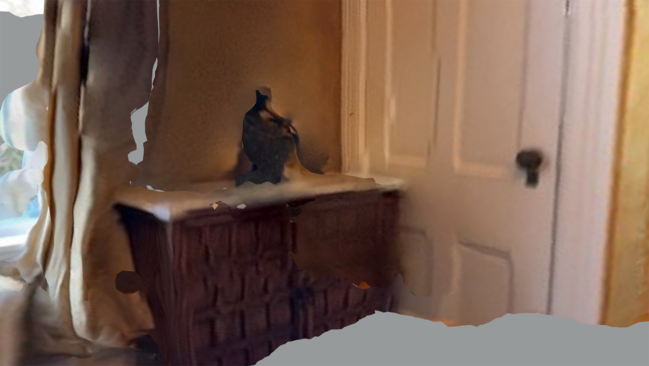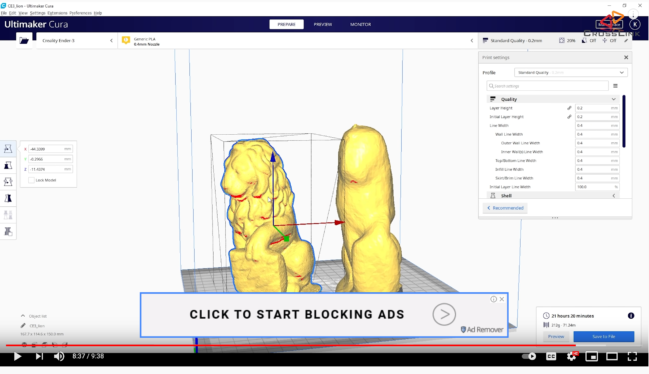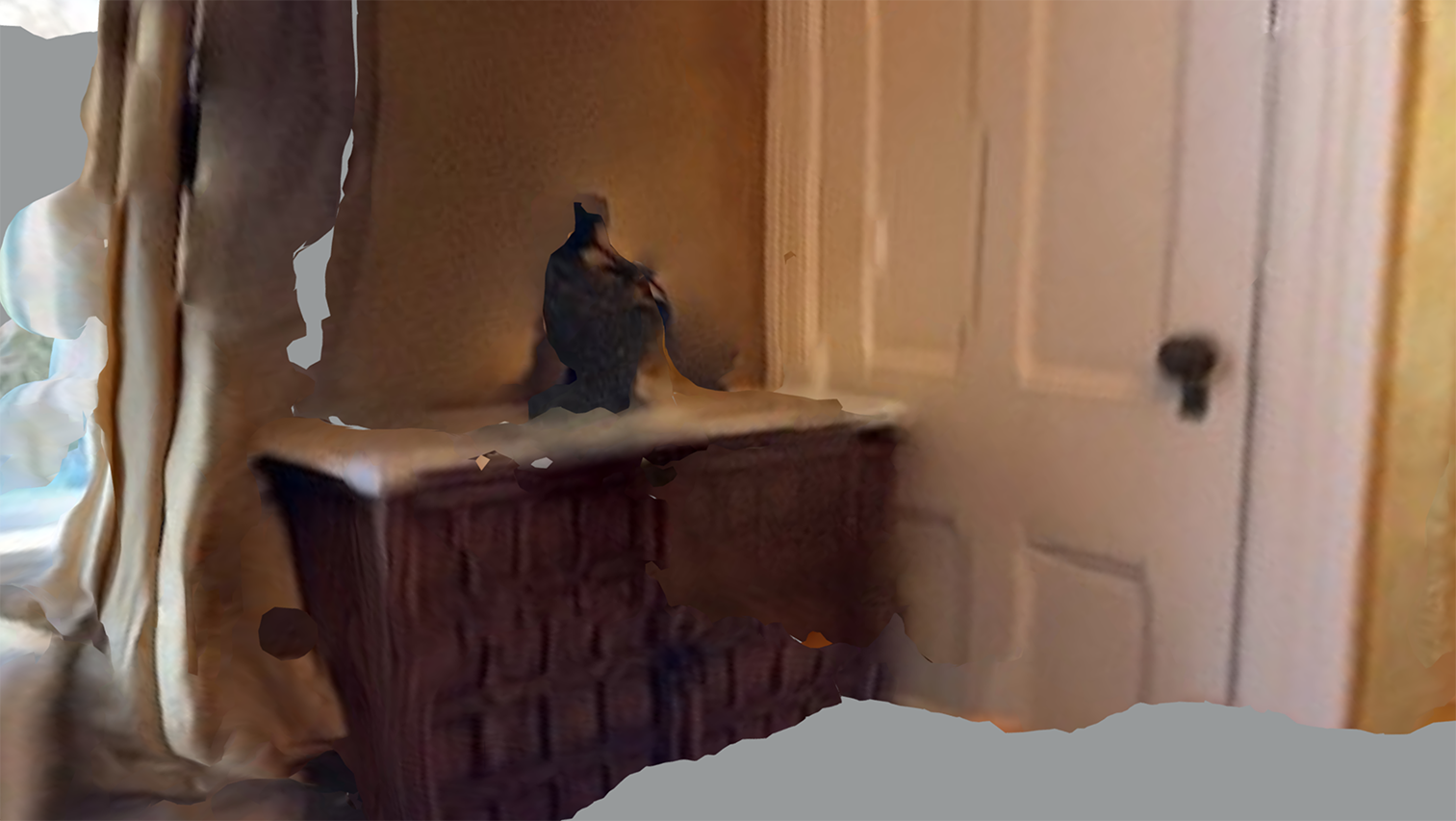
Learning to Be a LiDARer
Undoubtedly there is a cartoonish — or more politely said painterly — effect to LiDAR scans. Not only in my inexperienced hands but done by experts too.
See here how badly a LiDAR scan (right) fares against the same lion captured in photogrammerty. Unfortunately photogrammerty is more work. This is easy for me — I’m lazy and my philosophy states that any image that clicks inside a composition is a valid image. You have to admit my close-up inside a LiDAR scan has a romance that a technically-ideal scan would lack. That romance will alter whatever composition it inhabits.

For me that’s priceless — the amount of realism an image does or doesn’t convey is a vital carrier of meaning in the language of visuals. Contrasting those levels has an unsettling impact inside an artwork.
I’ve joined Sketchfab which says it’s the biggest aggregator of 3D models anywhere. Co-founded by Frenchman Alban Denoyel it hosts a pleasing diversity of practitioners — artists using technology from Maya, ZBrush and more, and now iPhone’s LiDAR scanner. Denoyel posts a daily LiDAR scan that you’re free to download.
I have to wonder what they’ll do with me who doesn’t aspire to perfect 3D scans. OK, truth. I’d love to accomplish nicely-crafted scans but my visual imagination is still 2D. I think of crocodiles springing from a would-be canvas turned to face different directions but then frozen. To address them as a 3D sculptor would is way beyond my learning curve. I actually wonder where these diverse 3D models go on to live.
Beyond here is the exciting 4D world. I’d love to use animations such as KyanOs‘s Anthroposaurus or Compsognathus Longpipes in Apple Motion. But let me get the stuff that’s aboil right now understood, attained.
I urge you to go to these two animations and use your cursor to make them far (two fingers up) and near (two fingers down) and hither-thither to start to understand what an artist using this kind of copyright-free imagery will need to grok to use it artfully.

